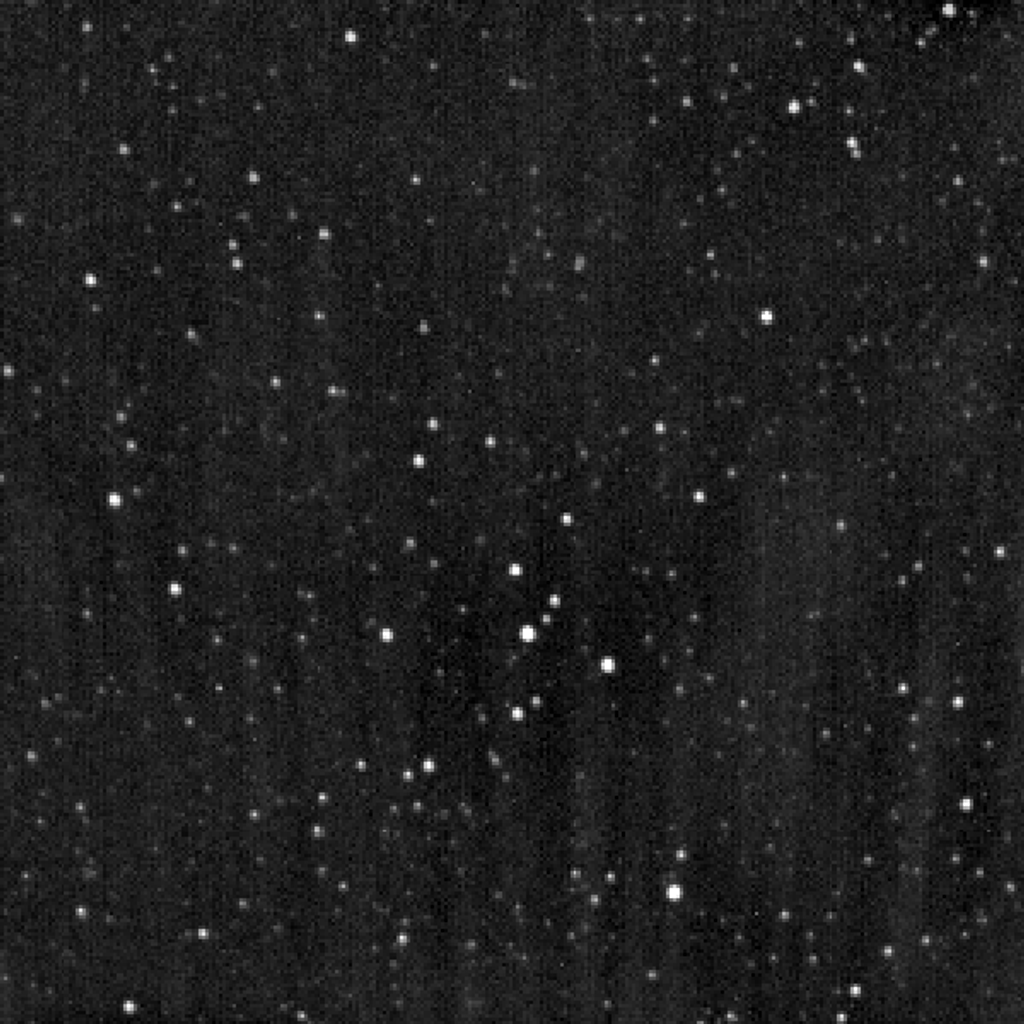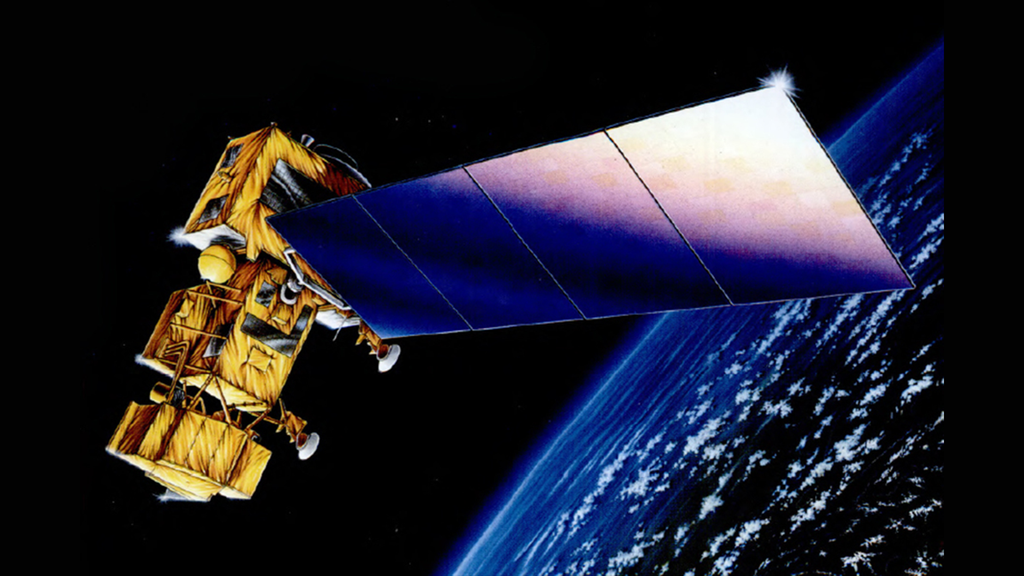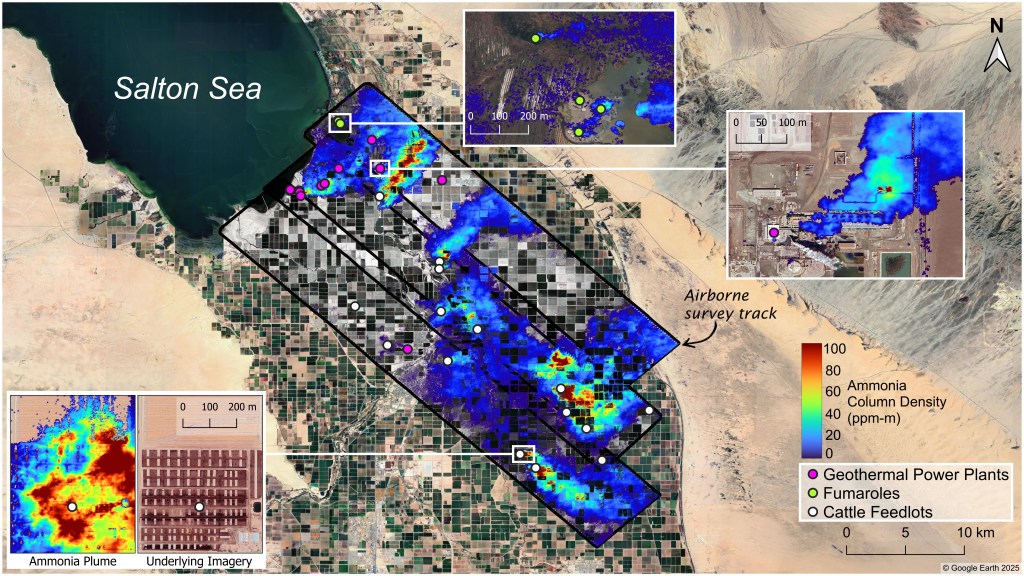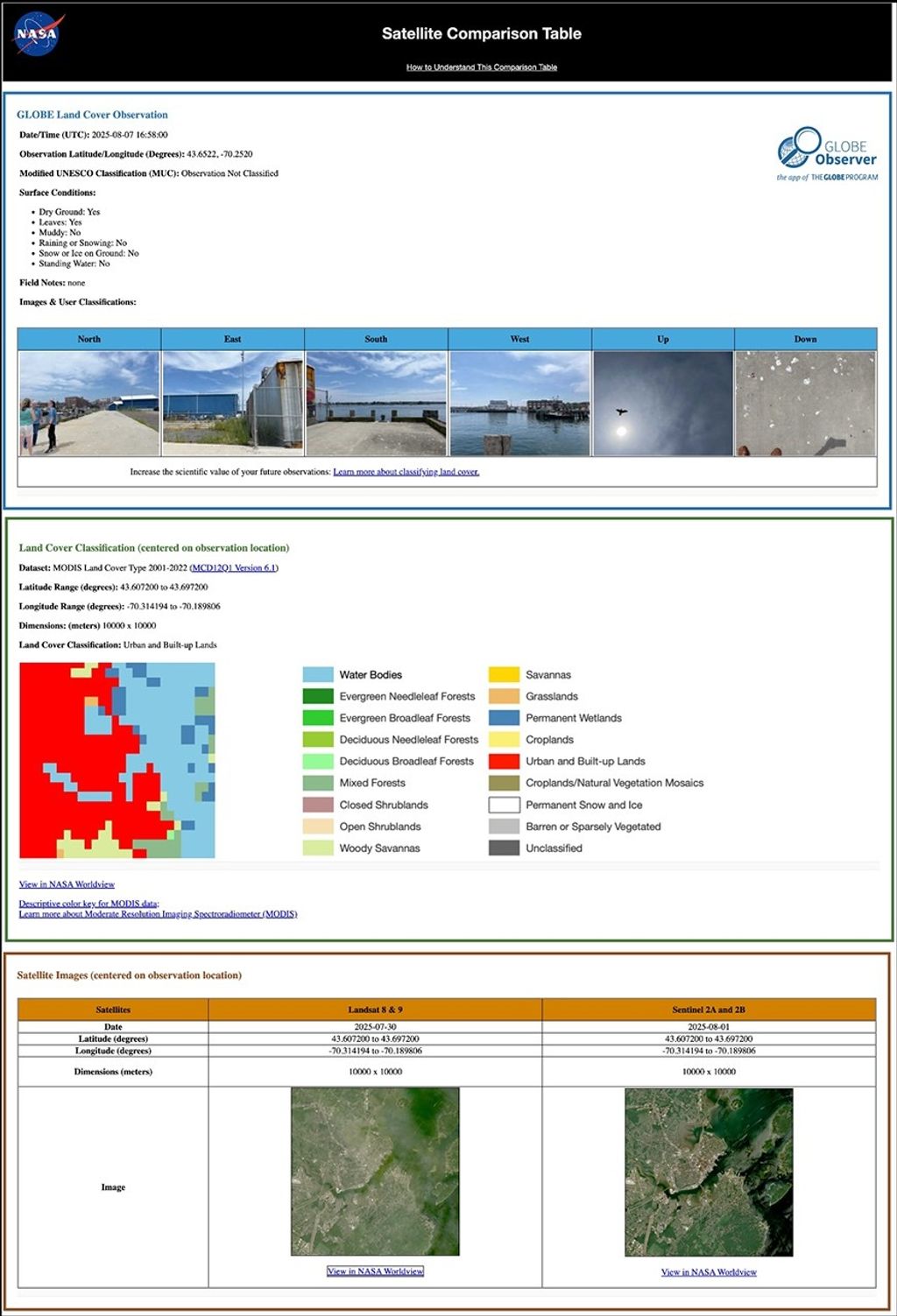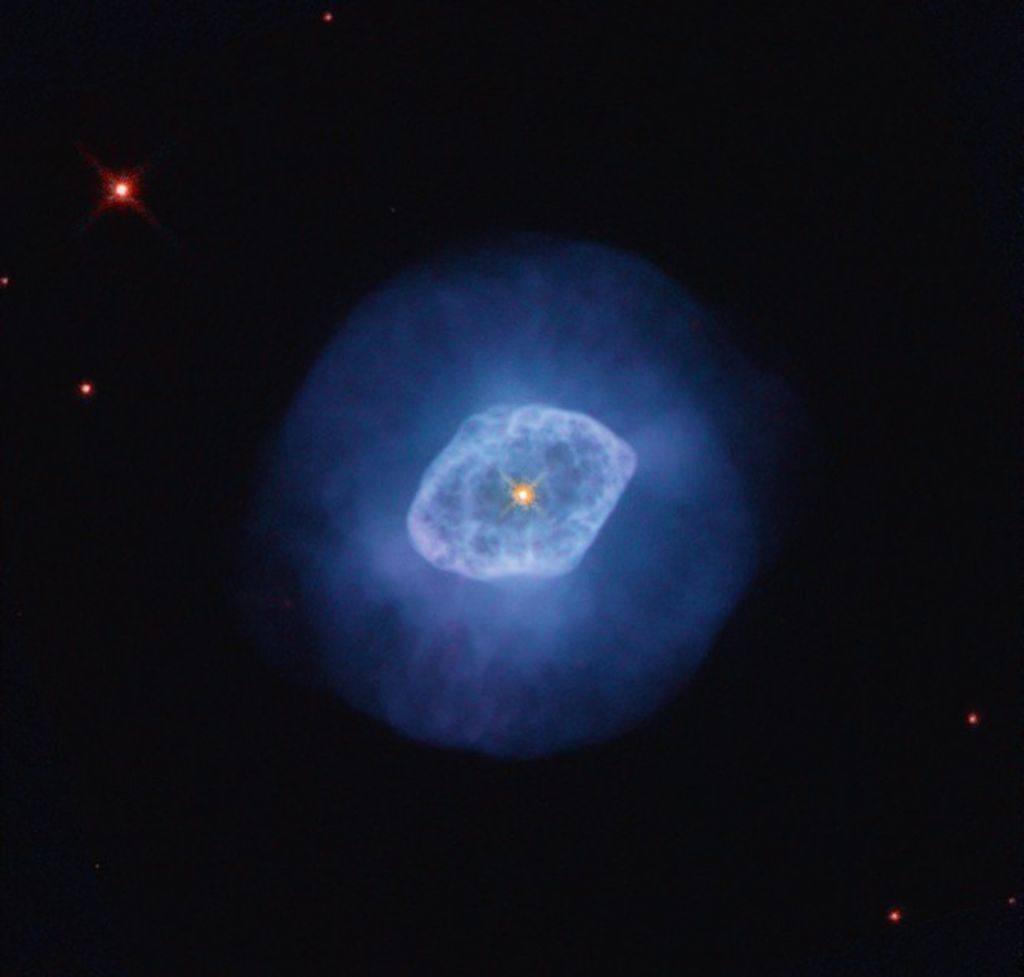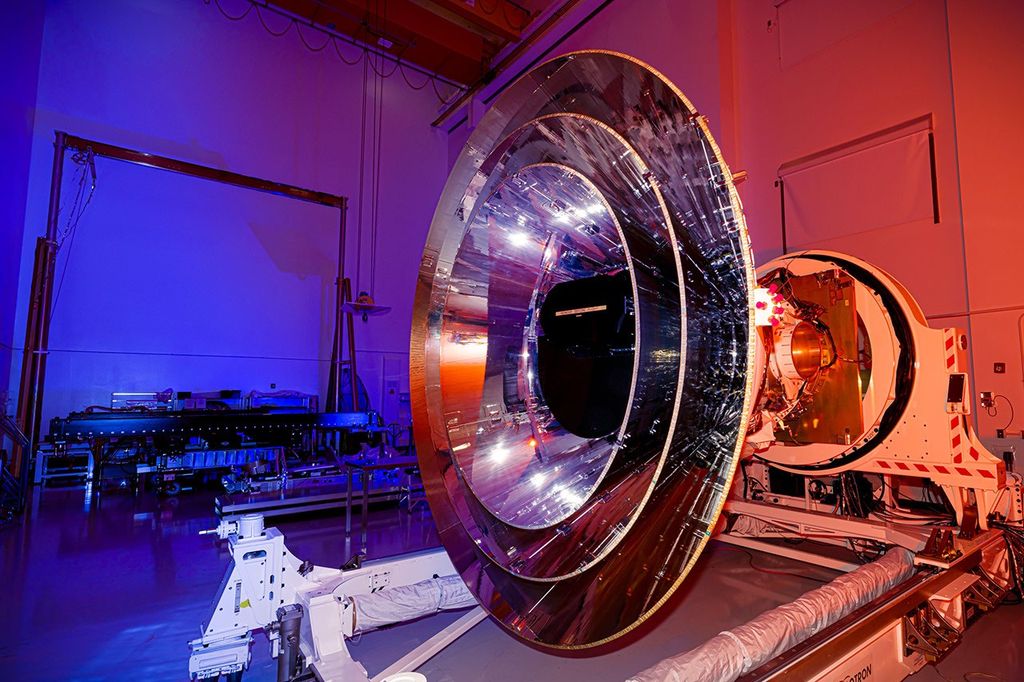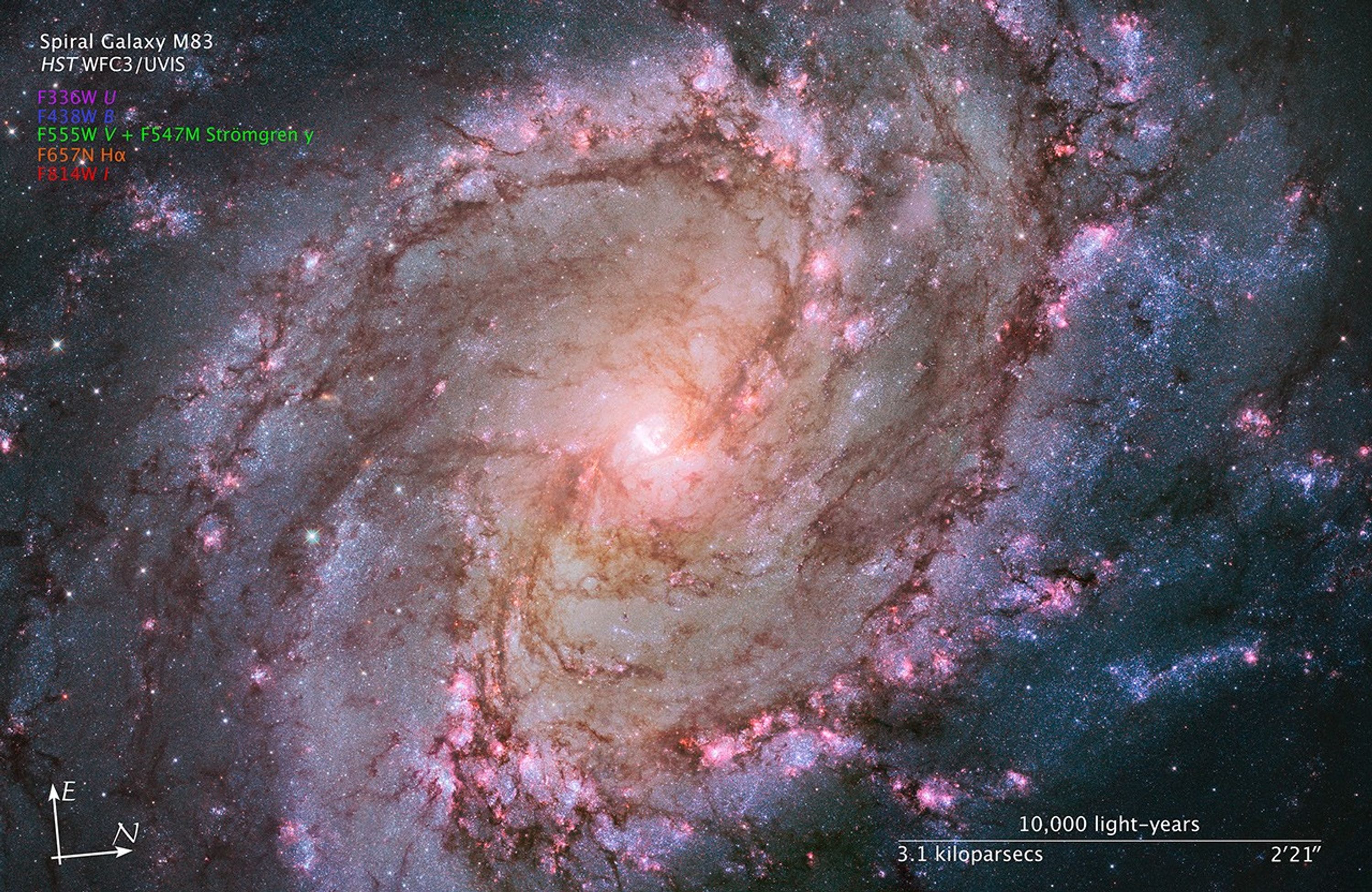1 min read
Spiral Galaxy M83

A photogenic and favorite target for amateur astronomers, the full beauty of nearby spiral galaxy M83 is unveiled in all of its glory in this Hubble Space Telescope mosaic image. The vibrant magentas and blues reveal the galaxy is ablaze with star formation. The galaxy, also known as the Southern Pinwheel, lies 15 million light-years away in the constellation Hydra.
The Hubble photograph captures thousands of star clusters, hundreds of thousands of individual stars, and "ghosts" of dead stars called supernova remnants. The galactic panorama unveils a tapestry of the drama of stellar birth and death spread across 50,000 light-years.
The newest generations of stars are forming largely in clusters on the edges of the dark spiral dust lanes. These brilliant young stellar groupings, only a few million years old, produce huge amounts of ultraviolet light that is absorbed by surrounding diffuse gas clouds, causing them to glow in pinkish hydrogen light.
Gradually, the fierce stellar winds from the youngest, most massive stars blow away the gas, revealing bright blue star clusters and giving a "Swiss Cheese" appearance to the spiral arms. These youngest star clusters are about 1 million to 10 million years old. The populations of stars up to 100 million years or older appear yellow or orange by comparison because the young blue stars have already burned out.
Interstellar "bubbles" produced by nearly 300 supernovas from massive stars have been found in this Hubble image. By studying these supernova remnants, astronomers can better understand the nature of the stars that exploded and dispersed nuclear processed chemical elements back into the galaxy, contributing to the next generation of new stars.
This image is being used to support a citizen science project titled STAR DATE: M83. The primary goal is to estimate ages for approximately 3,000 star clusters. Amateur scientists will use the presence or absence of the pink hydrogen emission, the sharpness of the individual stars, and the color of the clusters to estimate ages. Participants will measure the sizes of the star clusters and any associated emission nebulae. Finally, the citizen scientists will "explore" the image, identifying a variety of objects ranging from background galaxies to supernova remnants to foreground stars.
STAR DATE: M83 is a joint collaborative effort between the Space Telescope Science Institute and Zooniverse, creators of several citizen science projects including Galaxy Zoo, Planet Hunters, and the Andromeda Project (go to www.zooniverse.org to see the full list). The M83 project is scheduled to launch on Monday, January 13, 2014. People interested in exploring this remarkable image in more detail, and in directly participating in a science project, can visit http://www.projectstardate.org .
About the Object
- R.A. PositionR.A. PositionRight ascension – analogous to longitude – is one component of an object's position.13h 37m 0.95s
- Dec. PositionDec. PositionDeclination – analogous to latitude – is one component of an object's position.-29° 51' 55.51"
- ConstellationConstellationOne of 88 recognized regions of the celestial sphere in which the object appears.Hydra
- DistanceDistanceThe physical distance from Earth to the astronomical object. Distances within our solar system are usually measured in Astronomical Units (AU). Distances between stars are usually measured in light-years. Interstellar distances can also be measured in parsecs.15 million light-years (4.5 million parsecs)
About the Data
- Data DescriptionData DescriptionProposal: A description of the observations, their scientific justification, and the links to the data available in the science archive.
Science Team: The astronomers who planned the observations and analyzed the data. "PI" refers to the Principal Investigator.The image was created from Hubble data from proposal 11360: R. O'Connell (University of Virginia), B. Balick (University of Washington), H. Bond (STScI), D. Calzetti (University of Massachusetts), M. Carollo (Swiss Federal Institute of Technology, Zurich), M. Disney (University of Wales, College of Cardiff), M. Dopita (Australian National University), J. Frogel (Ohio State University Research Foundation), D. Hall (University of Hawaii), J. Holtzman (New Mexico State University), P. McCarthy (Carnegie Institution of Washington), F. Paresce (European Southern Observatory, Germany), A. Saha (NOAO/AURA), J. Silk (University of Oxford), A. Walker (NOAO/CTIO), B. Whitmore (STScI), R. Windhorst (Arizona State University), and E. Young (University of Arizona); and 12483: W. Blair (JHU), K. Long (STScI), F. Winkler (Middlebury College), R. Soria (Curtin University), B. Whitmore (STScI), R. Chandar (University of Toledo), P. Ghavamian (Towson University), M. Dopita (Australian National University), and B. Rangelov (George Washington University). - InstrumentInstrumentThe science instrument used to produce the data.HST>WFC3/UVIS
- Exposure DatesExposure DatesThe date(s) that the telescope made its observations and the total exposure time.August 2009 - September 2012, Exposure Time: 20 hours
- FiltersFiltersThe camera filters that were used in the science observations.F336W (U), F438W (B), F547M (Strömgren y), F555W (V), F657N (H-alpha), and F814W (I)
- Object NameObject NameA name or catalog number that astronomers use to identify an astronomical object.M83, NGC 5236, Southern Pinwheel Galaxy
- Object DescriptionObject DescriptionThe type of astronomical object.Barred Spiral Galaxy
- Release DateJanuary 9, 2014
- Science ReleaseHubble Views Stellar Genesis in the Southern Pinwheel
- CreditNASA, ESA, and the Hubble Heritage Team (STScI/AURA); Acknowledgement: W. Blair (STScI/Johns Hopkins University) and R. O'Connell (University of Virginia)

This image is a composite of separate exposures acquired by the WFC3 instrument on the Hubble Space Telescope. Several filters were used to sample broad and narrow wavelength ranges. The color results from assigning different hues (colors) to each monochromatic (grayscale) image associated with an individual filter. In this case, the assigned colors are: Purple: F336W (U) Blue: F438W (B) Green: F555W (V) + F547M (Strömgren y) Orange: F657N (H-alpha) Red: F814W (I)
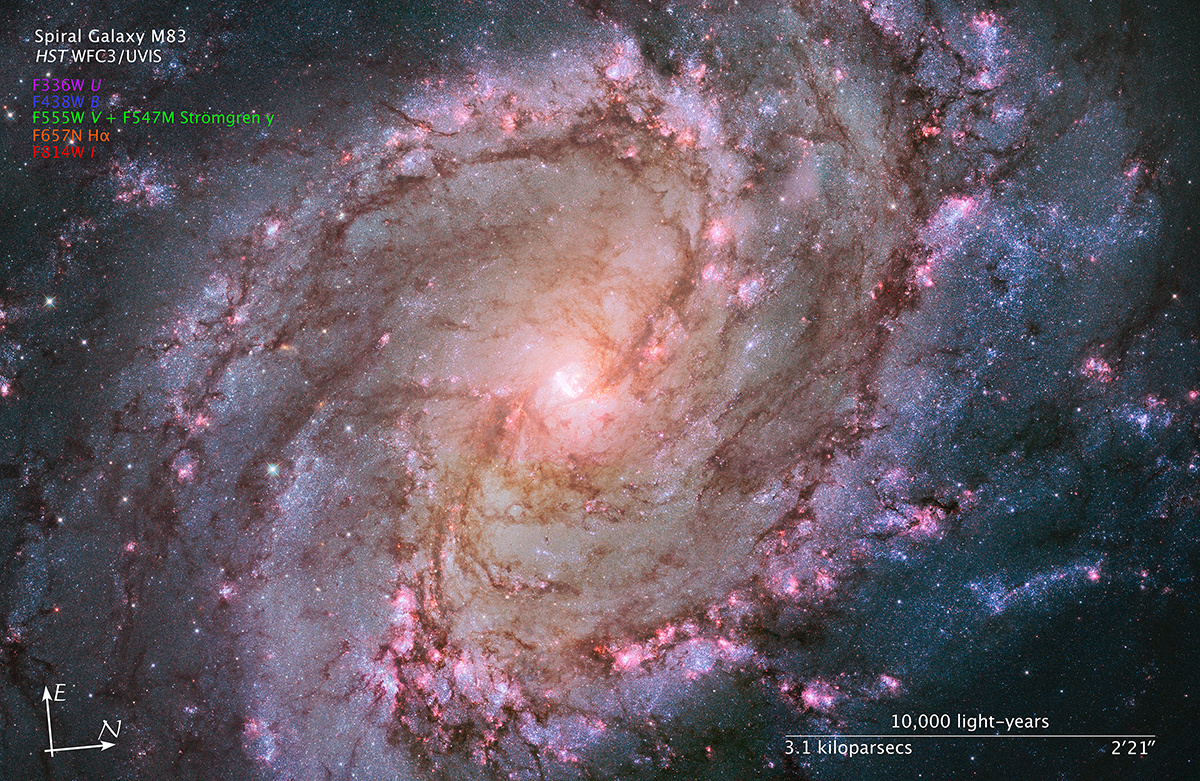
Related Images & Videos
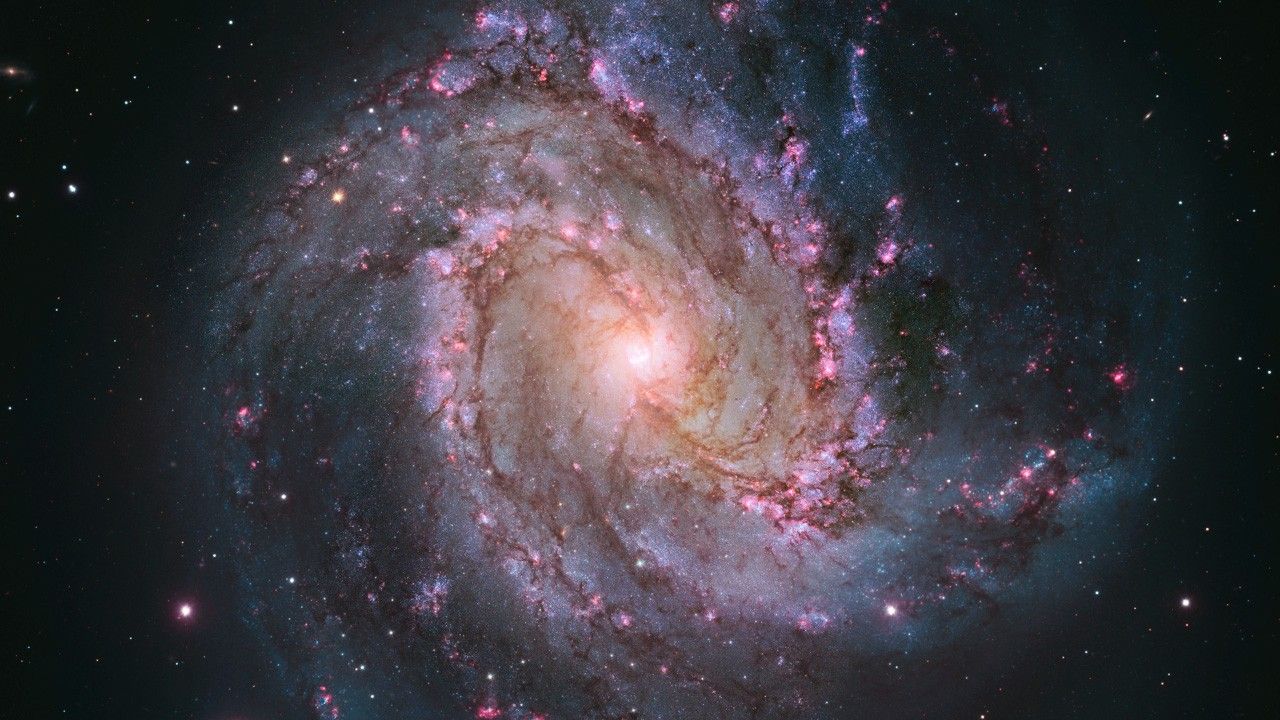
Hubble Views Stellar Genesis in the Southern Pinwheel (Pan and Zoom)
Astronomers using NASA's Hubble Space Telescope focused on the barred spiral galaxy M83, also known as the Southern Pinwheel, located 15 million light-years away. By assembling a number of Hubble images, scientists have made a mosaic of the iconic galaxy. This image shows...
Share
Details
Claire Andreoli
NASA’s Goddard Space Flight Center
Greenbelt, Maryland
claire.andreoli@nasa.gov






